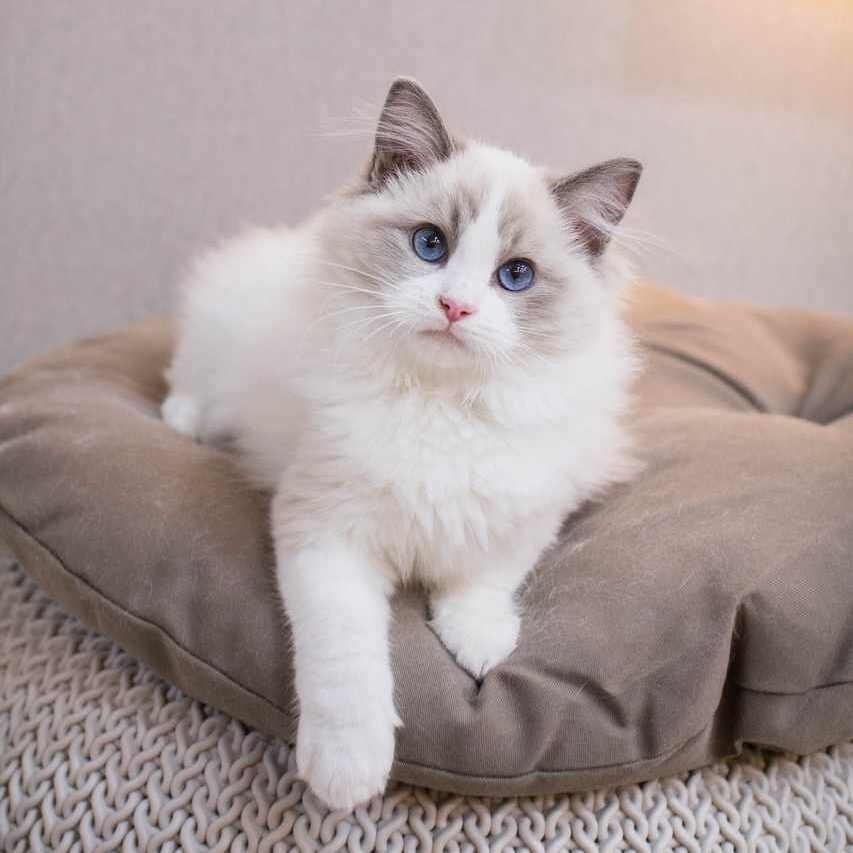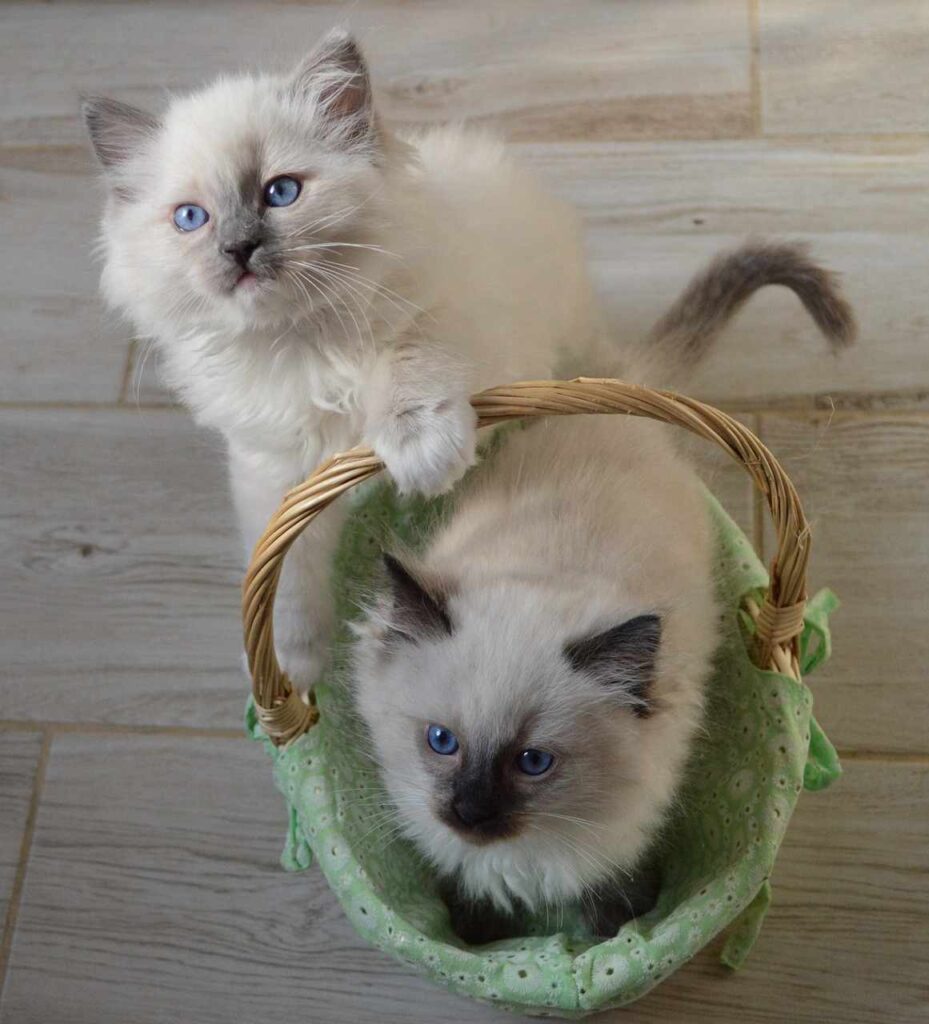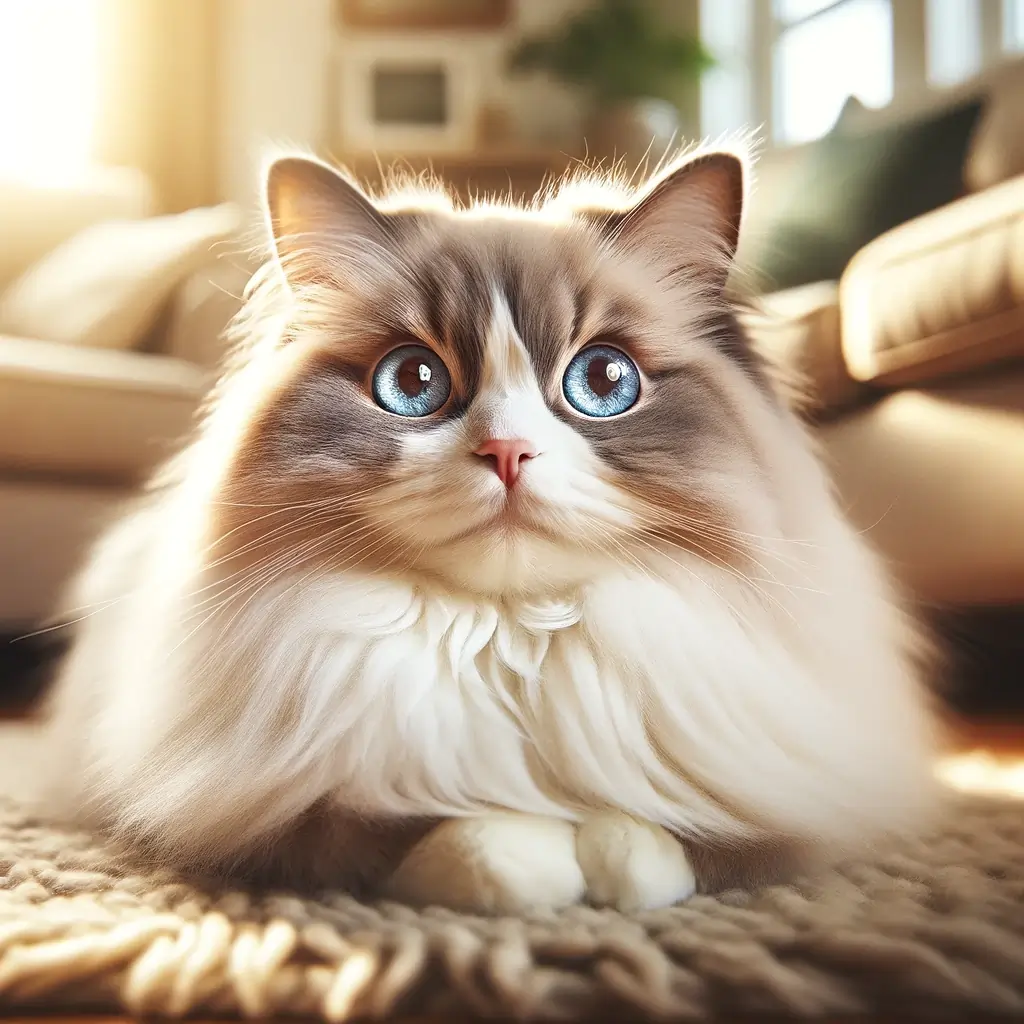Cat lovers favor the ragdoll breed of cats because of their gorgeous blue eyes and kind disposition. But some Ragdoll owners might discover something strange about their feline companions: crossed eyes. Strabismus, the medical term for this ailment, can make for an odd sight.
We’ll explore what having crossed eyes for a Ragdoll cat means, symptoms to look out for, underlying causes, and how to take care of a cross-eyed Ragdoll in this extensive guide.
What is Strabismus in Ragdoll Cats?
A condition known as strabismus, or crossed eyes, is caused by improper eye alignment. Divergent strabismus, which is less common, causes one or both eyes to turn outward, and convergent strabismus causes them to turn inward toward the nose instead of forward.
This disorder affects not only other breeds but also Ragdolls; nevertheless, breeds with a hereditary susceptibility, such as Siamese, Himalayan, and Persian, are more affected.
What are the Symptoms of Crossed Eyes in Ragdolls?
The misalignment of one or both eyes is the most noticeable sign of crossed eyes in Ragdoll cats. Your cat may have divergent strabismus, where their pupils point outward, or convergent strabismus, where their pupils point inside toward the nose. Crossed eyes might also accompany other symptoms, such as:
- Uncoordinated eye movement
- Rapid, involuntary eye movements (nystagmus)
- Head tilting
- Difficulty tracking objects or navigating spaces
Certain Ragdoll kittens may have crossed eyes at an early age. This is because their eye muscles are still growing. As they become bigger, their eyes will usually straighten out. However, you must see your vet right away if your adult Ragdoll develops crossed eyes suddenly.

What Causes Crossed Eyes in Ragdoll Cats?
Ragdolls may be born with crossed eyes, or they may develop them later in life. Let’s investigate the possible reasons for this ailment.
Genetic Predisposition
Genes cause ragdoll cats to have a higher frequency of crossed eyes. This is also true for Siamese, Himalayan, and Persian cats. The gene causes the colorpoint coat pattern. This pattern is typified by a light body with darker points on the face, ears, legs, and tail. The gene is often connected to this inherited trait.
Vestibular Disease
The inner ear’s vestibular system is essential for preserving equilibrium and spatial orientation. Infections, tumors, or aging-related degeneration can impact this system. They can cause head tilting, crossed eyes, and trouble walking.
Trauma or Injury
Trauma to the eye, eye socket, or surrounding nerves can cause strabismus in Ragdoll cats. This may result from accidents, fights with other animals, or even dental issues that lead to abscesses behind the eye.
Neurological Disorders
Crossed eyes can be a sign of an underlying neurological problem, such as brain tumors, inflammation, or congenital malformations like hydrocephalus (fluid accumulation in the brain). These conditions may also cause seizures, disorientation, and changes in behavior
How Is Strabismus Diagnosed in Ragdoll Cats?
Make an appointment with your veterinarian as soon as possible if you think your Ragdoll has crossed eyes. To identify the reason for the strabismus, they will perform a comprehensive physical examination that includes a neurological and ophthalmological assessment.
Your vet may perform the following tests:
- Schirmer tear test to evaluate tear production
- Fluorescein staining to check for corneal damage
- Tonometry to measure eye pressure
Additionally, your vet may recommend blood work, urinalysis, and imaging techniques like X-rays, CT scans, or MRI to rule out underlying health issues

Can Crossed Eyes in Ragdolls Be Treated?
The underlying reason of crossed eyes in Ragdoll cats determines the course of treatment. Congenital strabismus is a condition in which a cat is born with misaligned eyes. Treatment is usually not needed, as long as it does not affect the cat’s vision or quality of life.
However, if the strabismus is acquired and caused by an underlying health issue, addressing the root cause is crucial. Treatment options may include:
- Antibiotics for bacterial infections
- Anti-inflammatory medications for swelling or inflammation
- Surgery to remove tumors or correct anatomical abnormalities
In some cases, your vet may refer you to a veterinary ophthalmologist for specialized care.
Living with a Cross-Eyed Ragdoll
Your Ragdoll may have a charming look from their crossed eyes. But, it’s important to check their health. Visiting your veterinarian often will help find any changes or new problems early.
Accept your Ragdoll’s odd charm. Their strabismus is congenital and has no impact on their day-to-day activities! Many healthy, happy cats with crossed eyes do not have any vision issues. But their depth perception may be slightly affected. So, be extra cautious when adding new obstacles or moving furniture.

Conclusion
Ragdoll cats’ crossed eyes may be genetic. Or, they may show a medical problem. Knowing the signs, reasons, and diagnostic procedures can help. They will help you make sure your cat gets the care they need. Give your Ragdoll lots of love and care. Work closely with your vet to keep their eyes healthy and bright. This is true whether their unusual look is a permanent part of their appearance.
Remember, each cat is unique. A bit of quirkiness makes their allure stand out!

Hey guys, My name is Simon Smith. I’m from Canada and live near Victoria
I live with my sweet family and have 20+ Ragdolls of different types. I love them as my own children. My profession is as a hotel manager.
I love to keep Ragdolls and grow their breeder case. I have 7 years of experience.
I’m an expert in cat care. So, I’m here to provide you with new information about my cats daily. This is my personal blog website, so I request that you kindly visit our site daily.
If you’re a Ragdolls lover and you have any questions or confusion about cats, text me on the Contact Us page or Gmail.
Thank u
